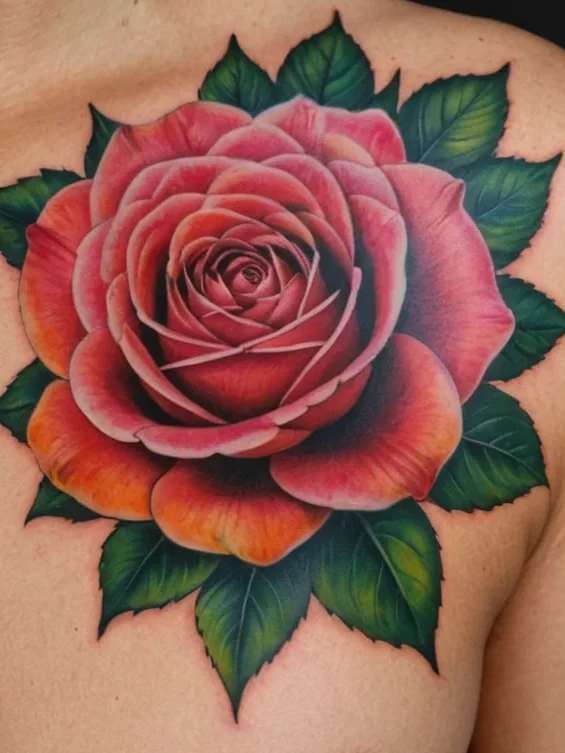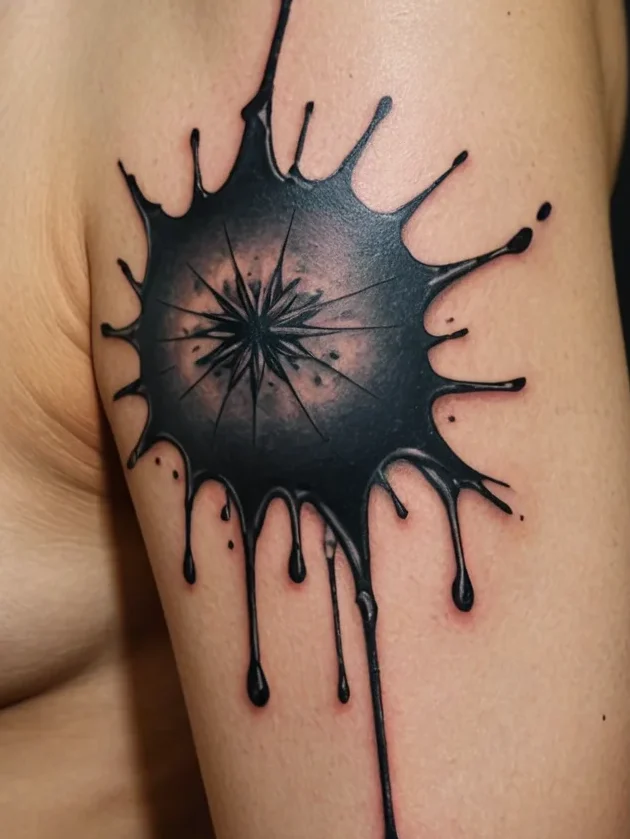The world of tattoos is rich with history, artistry, and personal expression. Yet, like many enduring forms of human adornment and cultural practice, it is also surrounded by a cloud of myths and misconceptions. For decades, whispers and dire warnings have circulated, often deterring individuals from embracing this vibrant art form. As tattoo culture continues to flourish and become more mainstream, it’s crucial to separate fact from fiction. At tattoovalue.net, we’ve consulted with seasoned tattoo artists and industry professionals to bring you the definitive debunking of the most persistent tattoo myths. Prepare to have your perceptions challenged and your understanding of this ancient art form expanded. This guide will equip you with the knowledge you need to make informed decisions about your ink, dispelling the fears that have long overshadowed the beauty and significance of tattoos.
Myth #1: Tattoos cause cancer – the science behind the fear

One of the most persistent and arguably the most alarming myths surrounding tattoos is the belief that they can cause cancer. This fear often stems from anxieties about the inks used and potential reactions within the body. However, the vast majority of scientific research and expert opinion refutes this claim. While it’s true that tattoo inks are foreign substances introduced into the dermis, modern, reputable tattoo inks are formulated with pigments that are generally considered safe for cosmetic and artistic use. Historically, some early inks may have contained ingredients that posed risks, but the industry has evolved significantly. Regulatory bodies in many countries, such as the European Chemicals Agency (ECHA), have extensively studied tattoo inks. Their findings indicate that while allergic reactions can occur, there is no established causal link between tattoos and an increased risk of cancer when using compliant inks from reputable studios. The key lies in the quality and composition of the ink. Professional tattoo artists exclusively use inks that meet stringent safety standards, are sterilized, and are specifically manufactured for tattooing. These inks are typically composed of pigments (which provide the color, often derived from minerals or synthetic compounds) and a carrier solution (usually sterile water or alcohol). The pigments are designed to be inert, meaning they do not react chemically with the body’s tissues. Concerns about inks migrating to lymph nodes have also been raised, but studies have shown that these pigments remain localized within the skin’s macrophages (cells that engulf foreign particles) and do not inherently promote cancerous growth. Of course, like any procedure involving breaking the skin, proper aftercare is paramount to prevent infection, which could lead to complications. However, the ink itself, when sourced responsibly, is not considered a carcinogen. If you have concerns, always discuss the inks used by your chosen artist and ensure they operate in a clean, professional environment. Reputable studios will readily provide information about the products they use.
Myth #2: Tattoo ink is unsafe – expert insights on modern tattoo pigments
Closely related to the cancer myth is the general belief that tattoo ink is inherently toxic or unsafe. This is a broad generalization that fails to account for the significant advancements in tattoo pigment technology and regulation. Tattoo artists emphasize that the safety of tattoo ink is directly tied to its source and quality. Today’s tattoo inks are manufactured under strict quality control measures. Reputable brands invest heavily in research and development to ensure their products are not only vibrant and long-lasting but also hypoallergenic and free from harmful contaminants. The pigments used are often the same or similar to those found in other regulated cosmetic products, such as makeup or hair dyes, and have undergone rigorous testing. For example, many modern inks utilize organic or inorganic pigments that are finely milled to ensure they can be effectively and safely deposited into the skin. Some inks may contain stabilizers or preservatives, but these are typically present in minuscule amounts and are deemed safe for dermal application. Allergic reactions, while possible with any substance introduced to the skin, are relatively rare and often manifest as localized redness, itching, or swelling, usually during the healing process or shortly after. These are typically not indicative of systemic toxicity but rather a specific sensitivity to a particular pigment component. Experienced tattoo artists are adept at recognizing and advising on potential sensitivities. Furthermore, the application process itself plays a crucial role in safety. Sterilized equipment, single-use needles, and a clean working environment are non-negotiable in any reputable tattoo studio. These practices minimize the risk of infection and ensure that the ink is introduced into the skin under sterile conditions. The “unsafe ink” myth often originates from anecdotal evidence or poorly regulated, black-market inks which can indeed contain dangerous impurities like heavy metals or industrial-grade pigments not intended for human use. Therefore, the distinction between high-quality, professionally sourced inks and unverified products is critical. Choosing a studio that prioritizes hygiene and uses well-known, reputable ink brands is your best defense against any perceived risks associated with tattoo pigments.
Myth #3: Tattoos fade quickly and look bad over time – what to expect and how to preserve your ink

The idea that tattoos inevitably degrade into unrecognisable splotches over time is a common concern, particularly for those considering their first piece. While it’s true that tattoos are not immutable – they are, after all, living art on living skin – the extent to which they fade and age is heavily influenced by several factors, many of which are within your control. Tattoo artists are adamant that a well-executed tattoo, using quality inks and proper aftercare, can remain vibrant and clear for decades. Modern tattoo inks are formulated for longevity. The pigments are designed to be stable and resistant to environmental factors. However, skin is a dynamic organ. It heals, regenerates, and is constantly exposed to the elements. Over many years, natural skin aging, sun exposure, and the body’s own processes can cause subtle changes in the appearance of a tattoo. The most significant factor contributing to premature fading is undoubtedly excessive sun exposure. UV radiation breaks down pigment particles, causing colors to dull and lines to soften. This is why tattoo artists universally recommend diligent sun protection for any tattooed skin. Applying high-SPF sunscreen regularly, especially during the first few weeks of healing and any time the tattoo is exposed to the sun, is the single most effective way to preserve your ink’s clarity and vibrancy. Another crucial element is the initial quality of the tattoo. A skilled artist will use the appropriate needle depth and ink saturation techniques to ensure the pigment is placed correctly within the dermis. If the ink is placed too superficially, it will fade much faster. Conversely, if it’s placed too deeply, it can blur over time. Proper healing is also paramount. Inadequate aftercare, such as picking at scabs or exposing the healing tattoo to harsh environments, can lead to scarring or uneven pigment retention, which can impact the long-term appearance. Touch-ups by a professional artist can also help refresh older tattoos. Many people find that a small touch-up session every 5-10 years can restore the crispness and brightness of their ink. So, while some minor softening of lines or slight dulling of colors might occur over a lifetime, the dramatic fading portrayed in this myth is largely avoidable with conscious effort and professional artistry.
Myth #4: Getting a tattoo hurts immensely – pain management and realistic expectations

Pain is perhaps the most universally discussed aspect of getting tattooed, and the myth that it is an unbearable, agonizing experience often deters potential clients. While getting a tattoo certainly involves discomfort, the level of pain is highly subjective and depends on numerous factors. Tattoo artists explain that pain perception varies greatly from person to person. Your individual pain threshold, your mental state on the day of the appointment, and even your hydration levels can all influence how much you feel. Different body parts also have vastly different pain levels. Areas with thinner skin, fewer nerve endings, and less cushioning (like ribs, feet, or elbows) tend to be more sensitive than areas with thicker skin, more muscle, or fatty tissue (like the outer thigh or upper arm). The style of tattoo also plays a role; extensive shading or color packing might involve longer sessions and more continuous sensation compared to simple linework. Reputable tattoo artists are trained to work efficiently and with consideration for their client’s comfort. They use high-quality, modern tattoo machines that vibrate at specific frequencies, allowing for precise application of ink with minimal trauma to the skin. Many artists also employ techniques to minimize discomfort, such as working in sections or allowing for breaks. Distraction is also a powerful tool. Listening to music, watching a movie, or engaging in conversation can significantly shift your focus away from the sensation. Deep breathing exercises can also help manage anxiety and pain. It’s also important to manage expectations. Understand that there will be a sensation – a persistent scratching or buzzing feeling – but it is generally manageable. Many describe it as an intense itch or a hot sensation rather than sharp pain. For those particularly anxious about pain, discussing options like topical numbing creams with your artist *before* the appointment is advisable, although artists have varying policies on their use. Ultimately, the discomfort is temporary, and the lasting result is a piece of art you cherish. The anticipation and fear often amplify the perceived pain more than the actual sensation.
Myth #5: You can’t get a tattoo if you have sensitive skin or allergies

This myth suggests that individuals with sensitive skin or a history of allergies are automatically disqualified from getting tattooed. While it’s true that certain skin conditions or allergies require extra caution, it does not mean that tattoos are entirely off the table. Tattoo artists emphasize that sensitivity and allergies are not absolute barriers, but rather factors to be discussed and managed carefully with a qualified professional. The key to navigating this is transparency and proper preparation. If you have known skin sensitivities, such as eczema or psoriasis, or a history of allergic reactions to cosmetics, metals, or dyes, it’s crucial to communicate this to your tattoo artist beforehand. Many artists will recommend a patch test. This involves applying a small amount of the intended tattoo ink to a discreet area of your skin (often the inner wrist or behind the ear) and waiting 24-48 hours to observe any adverse reactions. If the patch test shows no redness, itching, or swelling, it significantly increases the likelihood that the tattoo process will be safe and well-tolerated. Furthermore, the type of ink used is critical. As discussed previously, modern tattoo inks are formulated with safety and hypoallergenicity in mind. Artists who specialize in working with clients with sensitivities will often use inks from brands known for their purity and minimal allergenic potential, often opting for vegan or organic formulations. The location of the tattoo can also be a consideration; areas with naturally robust skin may be preferable to areas prone to irritation. It’s also important to remember that a sterile, professional environment minimizes exposure to irritants. The healing process for someone with sensitive skin might require extra diligence with aftercare, using only recommended hypoallergenic products. However, with the right artist, the right ink, and a thorough discussion of your individual skin needs, getting a tattoo can be a successful and rewarding experience even for those with sensitive skin or a predisposition to allergies.
Myth #6: Tattoos are unprofessional and will hurt your career
The notion that visible tattoos are inherently unprofessional and can hinder career prospects is a lingering stereotype from a bygone era, but it is rapidly becoming outdated. Tattoo artists and industry experts observe that societal attitudes towards body art are evolving dramatically, and this shift is reflected in the modern workplace. While it’s true that some extremely conservative industries or specific roles might still have strict dress codes regarding visible tattoos, the blanket assumption that tattoos equate to unprofessionalism is no longer accurate for the majority of professions. Many creative fields, tech industries, and even corporate environments are becoming increasingly accepting, even embracing, personal expression through tattoos. The key factor, tattoo artists advise, is often the context and placement of the tattoo, as well as the specific company culture. A well-executed, tasteful tattoo in a discreet location, such as the forearm, ankle, or shoulder blade, is far less likely to be perceived negatively than extensive facial or neck tattoos, although even these are gaining acceptance in certain circles. What truly defines professionalism in today’s workforce is often competence, skill, and attitude, rather than the presence or absence of ink. Many successful individuals, from entrepreneurs and artists to doctors and lawyers, proudly display their tattoos. The quality and artistry of the tattoo can also play a role; a professional, well-done piece is more likely to be viewed as a form of personal art rather than a sign of rebellion or unprofessionalism. It’s always wise to research the specific company culture you are interested in. If you are concerned about career impact, opt for placements that can be easily covered by standard professional attire. However, as acceptance grows, the idea that tattoos are a career death sentence is largely a myth that needs to be retired.
Myth #7: Tattoo ink can migrate to your lymph nodes and cause serious health issues
Concerns about tattoo ink migrating to lymph nodes often fuel health-related myths, particularly the idea that this migration inevitably leads to serious illness. Tattoo artists and medical professionals clarify that while ink particles *can* be transported through the lymphatic system, this is a natural process of the body attempting to process foreign material, and it does not inherently equate to disease. The lymphatic system is essentially the body’s waste disposal network. When ink particles are introduced into the dermis, specialized immune cells called macrophages engulf these particles. Some of these macrophages can then travel through the lymphatic vessels to lymph nodes, carrying the pigment with them. This is a known biological phenomenon, and it has been detected in studies analyzing lymph node tissue from tattooed individuals. However, the presence of pigment in the lymph nodes is not evidence of a health problem. It simply shows that the body’s immune system is functioning as it should, attempting to clear the foreign material. Crucially, studies have not established a causal link between this pigment presence and the development of lymph node disorders or other serious health conditions. The pigments themselves, when from reputable sources, are generally inert and do not trigger harmful inflammatory responses or cancerous mutations within the lymph nodes. The fear might stem from the association of lymph nodes with diseases like lymphoma, but the presence of tattoo pigment is merely a sign of transport, not an indicator of disease itself. Think of it like breathing in dust particles; they might end up in your lungs, but that doesn’t automatically mean you’ll develop a respiratory illness. The risk associated with tattoo ink migration is primarily linked to the *quality* of the ink used. If inks contain harmful contaminants or heavy metals, then migration could indeed pose a health risk. This underscores the importance of choosing a professional studio that uses high-quality, tested inks. For the vast majority of tattooed individuals using compliant inks, the presence of pigment in lymph nodes is a benign biological consequence of tattooing, not a precursor to serious illness.
Myth #8: You can’t donate blood if you have tattoos
This is a widely spread myth that often causes concern for tattooed individuals wishing to donate blood. Tattoo artists and blood donation organizations alike state that having tattoos does not automatically disqualify you from donating blood, but there are specific regulations and waiting periods involved. The primary reason for these guidelines is to mitigate the risk of transmitting blood-borne infections, such as Hepatitis B or C, which can occur if needles or equipment are not properly sterilized. In many countries, including the United States and the United Kingdom, there is a mandatory waiting period after receiving a tattoo before you can donate blood. This period typically ranges from six months to a year. The purpose of this waiting period is to allow sufficient time for any potential infections acquired during the tattooing process to become detectable through standard blood tests. Reputable tattoo studios adhere to strict hygiene standards, using sterile, single-use needles and equipment, which significantly minimizes the risk of infection. However, blood donation services err on the side of caution to ensure the safety of the blood supply. If you received your tattoo from a state-regulated facility that uses sterile needles and ink, the waiting period is usually enforced. If you received your tattoo in a place where proper sterilization practices are questionable or unknown, the waiting period might be longer, or you may be temporarily ineligible. The crucial takeaway is that the tattoo itself isn’t the disqualifier; it’s the *potential risk* of infection associated with the tattooing process that necessitates the waiting period. Therefore, if you have tattoos and wish to donate blood, inquire about the specific regulations of your local blood donation center. As long as you received your tattoo from a licensed and reputable establishment, you will likely only need to observe the required waiting period before you can contribute to this life-saving cause.
Myth #9: All tattoo artists are the same – finding the right one matters
While it might seem straightforward, the myth that “all tattoo artists are the same” is a dangerous oversimplification that can lead to poor results and even health risks. Tattoo artists strongly advocate for the fact that skill, specialization, and professionalism vary immensely within the industry. Choosing the right artist is arguably the most critical decision you’ll make when getting a tattoo. A good artist possesses not only technical skill in applying ink to skin but also a strong understanding of design, composition, color theory, and how tattoos age. Furthermore, artists often specialize in specific styles – be it traditional American, Japanese, realism, watercolor, or fine line. An artist who excels at bold, traditional designs may not be the best choice for intricate black-and-grey realism, and vice versa. The best artists have a robust portfolio showcasing their consistent quality across various pieces. Beyond technical skill, professionalism is key. This includes maintaining a clean and sterile studio environment, using high-quality, safe inks and equipment, communicating effectively with clients about their vision and expectations, and providing clear aftercare instructions. A true professional will prioritize your health and satisfaction. Conversely, an inexperienced or unprofessional artist might cut corners on hygiene, use inferior products, or lack the artistic sensibility to bring your idea to life effectively, leading to a tattoo that fades poorly, looks amateurish, or even causes infection. Always do your research: look at artists’ portfolios online, read reviews, and consider consultations. Don’t be afraid to ask questions about their experience, their sterilization practices, and the inks they use. Finding an artist whose style aligns with your vision and who demonstrates a commitment to safety and quality is paramount for a positive and lasting tattoo experience.
Myth #10: Laser tattoo removal is instant and painless
The final myth we’re debunking tackles the misconception that laser tattoo removal is a quick, easy, and pain-free solution for unwanted ink. Tattoo removal specialists and artists emphasize that while laser technology has made significant advancements, it is a process that requires patience, multiple sessions, and careful management. Firstly, the “instant” aspect is inaccurate. Laser removal works by breaking down ink pigments into smaller particles that the body’s immune system can then gradually clear away. This process takes time. Each laser session shatters the ink, but it takes weeks for the body to process these fragments. Therefore, multiple sessions, typically spaced 6-8 weeks apart, are necessary to see significant fading. The number of sessions required varies greatly depending on the tattoo’s size, age, color composition, depth of ink, and your skin type and immune response. Secondly, regarding pain, while many find laser removal more tolerable than getting a tattoo, it is not painless. The laser emits intense pulses of light that heat the ink pigments, causing a sensation often described as a rubber band snapping sharply against the skin. While topical numbing creams can be used, and some pain is expected, it is a distinct level of discomfort. Furthermore, potential side effects like blistering, swelling, temporary skin discoloration (hyperpigmentation or hypopigmentation), and scarring can occur if not performed correctly or if the skin is particularly sensitive. The effectiveness and safety also depend heavily on the skill of the technician operating the laser and the type of laser used. Different wavelengths are effective on different ink colors. White, yellow, and green inks can be particularly stubborn to remove. Tattoo artists often advise their clients to have realistic expectations about removal: it’s a gradual process, can be costly, and requires commitment. While it offers a viable way to lighten or remove tattoos, it is not an instantaneous or effortless solution.
Understanding these common myths is essential for anyone interested in tattoos, whether you’re planning your first piece or considering removal. By relying on expert advice and scientific evidence, you can approach the world of tattoos with confidence, clarity, and a deeper appreciation for this timeless art form.